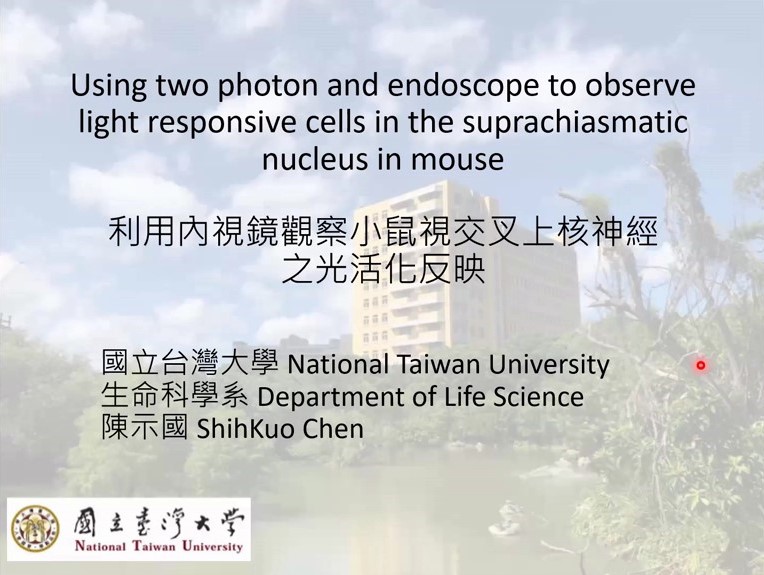
For circadian clock, one of the major criteria is that this clock can be entrained by external cycle. In mammal, the strongest external environmental cue to entrain the central clock at the suprachiasmatic nucleus (SCN) is light dark cycle. To convey light information for photoentrainment, a specific group of intrinsically photosensitive retinal ganglion cells (ipRGCs) which express photopigment melanopsin, is essential. After light exposure, ipRGC could release glutamate and PACAP directly through their axonal terminal in the SCN to advance or delay the clock depends on the circadian time of the animal. Since the SCN is located at the bottom of the hypothalamus, how does light input trigger the neuronal response in individual SCN neuron remain unclear. Here, using two photon microscope with GRIN lens, we could record activity of SCN neurons using GCaMP reporter. By analyze the calcium response of SCN neurons, we found that SCN neurons have distinct light response. In addition, the activity correlation analysis suggests that the connection circuit is different at distinct ZT time point. Together, our results suggest that the SCN is composed of a dynamic functional circuit. SCN neurons may not form a strong and stable connection throughout the day. Therefore, a flexible populational coding may be utilized for circadian time keeping.